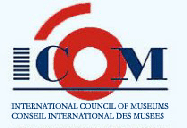 |
|
|||
|
REISERAPPORT
My Participation at the ICOM - ICME 2009 Conference ICME 2009 Seoul Conference 19.10. - 24.10 Working as a conservator in Ethnographic and Social History museums and as an ethnographic researcher in craft technology, this conference has helped to widen my understanding of how these two fields fit into the larger perspective of museums around the world. In some cases the papers showed a move away from object based display towards those focusing on oral histories, folklore and intangible cultural heritage; the objects becoming tangible illustrations of particular aspects of the spoken word and performance. This move away from objects as central to museums was further illustrated by our visit to the Traditional Cultural Content Museum in Andong. Here Korean history was brought alive with a 4D animation of the battle of Gochang (now Andong) and a variety of other interactive, high tech displays, producing a fun way of learning and becoming involved in the local culture through play. In turn this single museum experience allows visitors to make informed choices about which sites they wish to visit from the large number found in the area. The paper on the history of Japanese legislation and how it protects both tangible and intangible heritage, by Koichi Igarashi, was particularly informative. Often craft manufacture is being seen as out moded and given little value, increasing the speed at which it is lost. This paper showed how, in Japan, such knowledge is being given value, is protected and encourages the learning of such traditions by new generations. The paper was juxtaposed with the performances given during our stay and our visits to the Hahoe mask dancers (Important Intangible Cultural Properties No. 69) and Gyodongbeopju maker, Mr Choi (IICP No. 86), which showed how this type of legislation has been put into practice in South Korea and is working for heritage preservation. Open storage for objects was another theme put forward during the paper sessions. Several ways in which this storage had been achieved, within small museums, were shown to great effect. It is a method which has also been used on a larger scale, by the National Museum of Ireland, with some success. The importance of this display method is that it allows greater access to objects for the general public, without the high costs associated with exhibitions. These costs are often not viable for small privately funded museums. Legislation in many regions has or is moving to a position of access for all and open display is one of the practical solutions available. During discussions, questions were raised as to how this move would be viewed by conservators. From my perspective, open storage not only allows people access but allows them to gain a better understanding of the work of the conservator. In many cases, it also gives a higher standard of storage for the objects. With discussion, at the earliest opportunity, either during planning or designing, between all the museum professionals involved, any problems which arise can be overcome, as differing perspectives and needs are vocalized and understood. A further point made by many of the speakers concentrated on the need of mutual community involvement, ‘the museum should concentrate more on conducting civic dialogue between different social, ethnic, religious and local groups. Failing to do so only increases social problems’ (Bumaa - The National Museum of Mongolia: Creating an Institution for the Presentation and Dissemination of Cultural Heritage of Mongolia). Made from several different view points, to achieve a variety of aims within the differing museums represented, the importance of such dialogues as a method of peace and reconciliation was made clear, together with the impact it has on understanding our own and others cultures. The cultural performances and visits during the conference enhanced my stay greatly. While the after conference tour afforded me a wonderful insight into Korean culture and tradition, the choice of places serving to show the rich diversity of the country. An overview giving me the desire to learn more about Korea, I very much hope to visit again in the future. My thanks again go to the National Folk Museum for their fantastic hospitality and this opportunity to see and learn so much about their country. |
| ▲ til toppen Tilbake til reiserapporter 2009 |